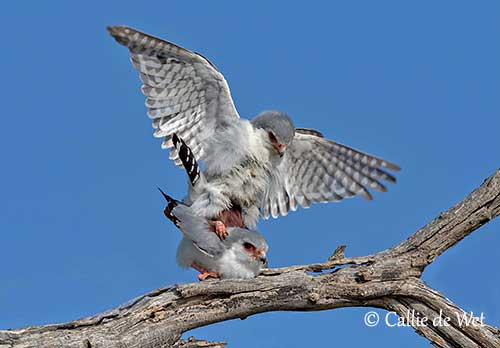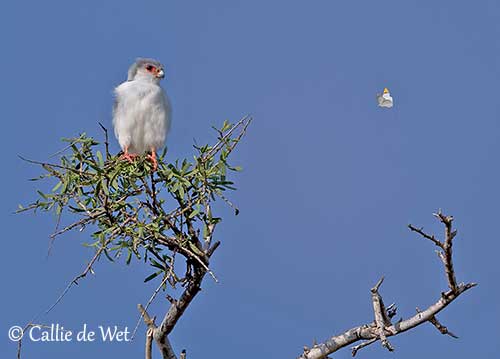
Photographer:
Callie de Wet
GALLERY
Text by Nicole Bouglouan
All photos on this page are copyrighted to Callie de Wet. This observation was made in South Africa in the spring of 2021.
The text was written by Nicole Bouglouan.
Both images and text are subject to copyright and may not be used without the express permission of the owners. This is aimed at individuals as well as at various ornithological associations and other organizations. Legal issues
Sources:
HANDBOOK OF THE BIRDS OF THE WORLD Vol 2 by Josep del Hoyo-Andrew Elliot-Jordi Sargatal - Lynx Edicions - ISBN: 8487334156
BIRDS OF PREY OF AFRICA AND ITS ISLANDS by Alan and Meg Kemp - Struik Publishers - ISBN: 1770073698
Animal Diversity Web (University of Michigan Museum of Zoology)
University of Cape Town News - Why Africa’s smallest raptor has helpers to raise its chicks
Pygmy Falcon of Africa (P. semitorquatus)
Global Raptor Information Network - Working to Conserve Birds of Prey in nature
Birdlife International – Data Zone
Page under
copyright !
The African Pygmy Falcon during the mating season
African Pygmy Falcon - Polihierax semitorquatus
The African Pygmy Falcon is one of the smallest birds of prey of Africa, with a weight of about 60 grams, a length of 20 centimetres and a wingspan of 37 centimetres. The male has grey back whereas the female has chestnut mantle. Both have white face and underparts.

This species is native to NE and SW Africa. It is found in dry, arid habitats with sparse vegetation, up to 1,600 metres of elevation.
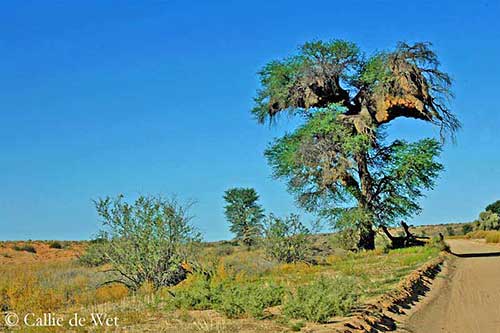
The African Pygmy Falcon is usually found in areas where the White-headed Buffalo-Weaver on NE areas and the Sociable Weaver in SW regions are present.
This small falcon does not build a nest but it usually occupies vacant chambers in the huge communal nests of the weavers. From numerous observations, about one quarter of all weaver nests in these two areas are occupied by the falcons, both for roosting and nesting. Occasionally, pairs and family groups may huddle together inside these chambers while roosting, to warm up during the cold desert nights.
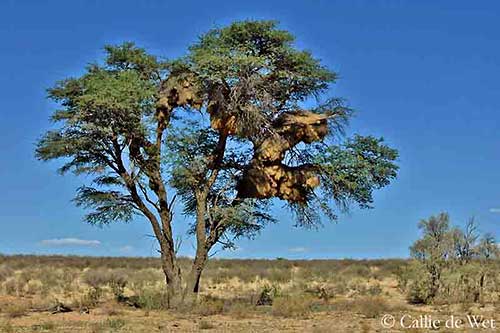
The falcons may occasionally prey on some weavers caught on the wings, or take at least some chicks. But on the other hand, these small falcons also protect their nest and the nesting territory from various predators, especially snakes.
Usually, the African Pygmy Falcon feeds on large insects, but mainly lizards and birds. This species does not hover like the hunting kestrels.
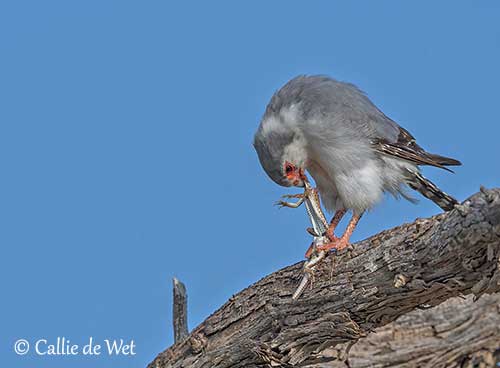
The breeding behaviour is relatively well known. The African Pygmy Falcon may have a polyandrous relationship with more than one male during the mating season. During this period, the males sing to attract other males.
Then, it is not uncommon for these males to live with the female and help her to tend and care the brood. They choose the nest chamber where they will reside together. This behavior is sometimes the result of limited nesting sites. The territories with more than two adults living together are sometimes occupied by groups.
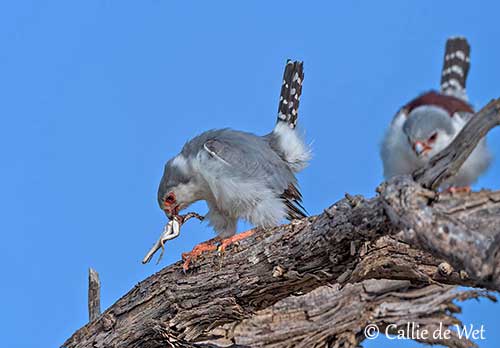
Some courtship displays are recorded and include head-bobbing, bowing and tail-wagging. These displays are accompanied by calls. Courtship feeding by male to female is fairly common, with the male offering a prey to the female prior to copulation. This behaviour may enhance mate fidelity, and appears to help the female to accumulate some fat reserves that help for egg formation.
Other displays show the female crouching and raising her tail, in order to indicate her availability to males.
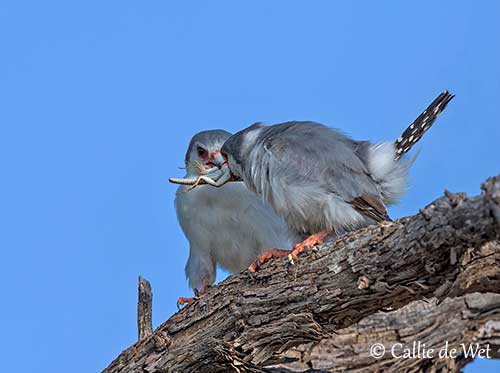

Copulation usually occurs on fairly high, exposed perch in tree.
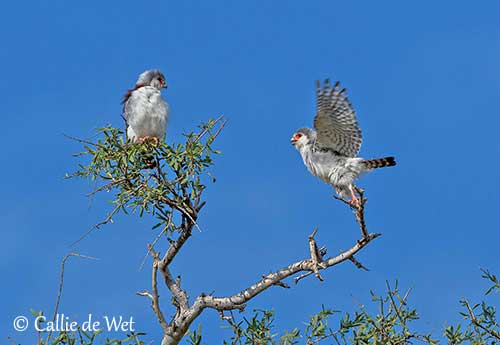
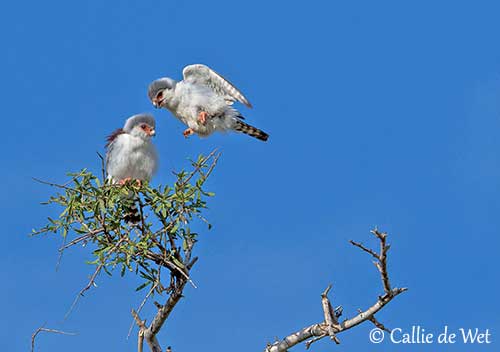


However, males are able to kill a rival neighbour to acquire a new mate and territory. They strongly fight with their talons and one of them may die, giving the winner the access to the loser's territory and mate.
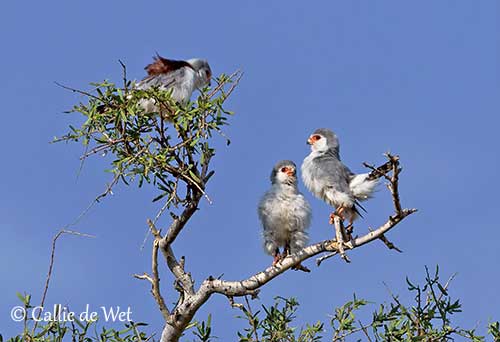

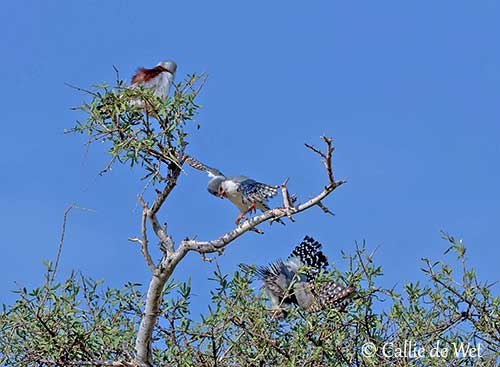

The female lays 3 white eggs. The incubation lasts about 28 days to one month, shared by both parents, but the female does most of the work. The male hunts and brings food while she sits on the nest.
At hatching, the chicks have white down. The male continues to hunt and bring prey to the female which feeds and tends the brood. The adults may have some helpers including about 25% of females, which is fairly unusual. They take part in nesting duties and defence of the territory.
The young fledge about 27 to 40 days after hatching, but they remain in the parental territory for up to two months after leaving the nest.
This species may produce two broods per season, usually only one, depending on food availability.
Both parents defend the nest and are very aggressive towards intruders if they approach the nest.
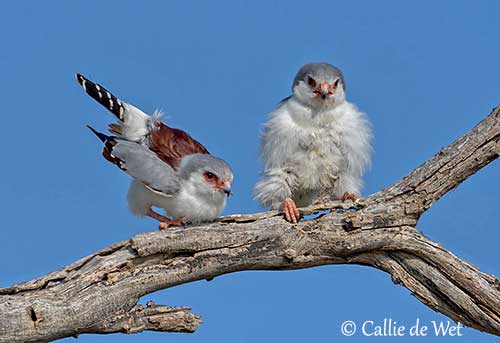
The African Pygmy Falcon is not globally threatened. The species is widespread and common throughout most of the range. Today, numerous man-made structures provide the birds new nesting sites.
The population is suspected to be stable and the species is evaluated as Least Concern.
